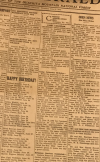
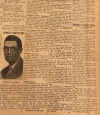
Celebrating 92 years 1927-2019+
Admission $2. Week long passes $5. Rodeo $8 and $5 for kids and 5 and under free. Armbands available for $15.00 for the
rides.
The fair survived the Great Depression and World War Two but the number of exhibits has shown a gradual decline over the decades and attendance is down. Very few people sew garments and can now days but canning in the youth section was up this year, 2019, probably due to encouragement from 4H leaders. The fair still has the support of sponsors and donators (sic) and many volunteers who donate their time and skill, the fair committee, with Jeff Robertson, Fair President in 2019, who made repairs and improvements to the fairgrounds, 4H groups, EH Clubs, Agri. teachers, school teachers, the local business who donate and take out advertisement space in the fair catalogue, the Extension Agents in an advisory and educational role and others. It is the fair's tradition to start off with a parade from the High School campus and pass the Mt. Ida courthouse. The fairground location is perfect, down Fairgrounds Road, off Highway 270 East, on the east side of Mt. Ida, with the grandstand shaded. Our county is full of talented people and people who volunteer but heat, lack of interest in the exhibits, technology, over scheduled, busy families and other interests have taken a toll on the fair. It takes people to volunteer and community involvement. The white building, the Buddy Vaughn building, next door to the red building, only had two booths - handmade soaps and JW. Fewer organizations and businesses are interested spending their time and effort manning a booth and get such a small turnout.
Come to the fair.
Nostalgia draws people. In 1947 exhibits were located in the Mt. Ida High School gymnasium and the livestock down on what is now the football field. The schools use to bring the grade pupils along in school buses after the parade but not anymore and brought them back to school in time to ride the bus home. Others remember when in the 50s and 60s the fair was a big event with a big parade, great rodeo, big carnival. There was very little room to park as everyone went to the fair. Even in the early nineties cars were parked all the way out to the highway. Farm kids (4-H, FFA, etc.) showed their animals and some 'camped out' in the animal barn. In the late 1960s there was a fair kitchen, a small screened in structure, with good burgers, fries & chili as the main menu offering, manned by volunteers. The concession stands sold cotton candy, corn dogs and candied apples. Some teenagers remember showing in the 1970s and working the ticket booths as there were all kinds of activities, rides, and the Friday and Saturday rodeo just to top it off. The fair was lots of fun.
2019 Friday 16th August 4 pm. A quiet afternoon.
The fairgrounds more or less deserted with no one at the ticket gate, a couple
of EH ladies manning a table in the red building and selling raffle tickets for
a quilt theme "Remember the '60s?" K/Q quilt to be drawn at the "Quartz, Quiltz
and Crafts Festival" in October 2019. A couple of cowboys saddling
their horses in the shade beside the Snow Rodeo Co. 18-wheeler. A few ponies and
bulls in the dusty dry arena and small steers in the dusty dry arena with straps
over their horns and side blinders strapped on to prevent rope burn and to stop
them seeing the lariat. One
concession stand on a trailer, a couple of rides already set up - a jute sack
slide and a spinning ride, and a game trailer and an inflatable. No one out in the hot sun, a couple of people in the
cattle barn hanging ribbons on the stalls, getting ready for grandparents who
will want to take a photo, when they come to the fair in the evening. A few
cattle trailers and pickup trucks in the back in the shade. The pigs all
sleeping, goats happy, sheep x2 one with a pink cover the other with a blue
cover, hens and rabbits in the poultry barn making a lot of noise and smelling. Two booths
in the white building manned by four people. Looks like activity starts when the
rodeo starts at 7.30 pm. The fair was held the first week school went back, that
didn't help attendance.
The County Fair
by Edwin C. Ranck (b. in Lexington, Kentucky in 1879) This
poem is in the public domain.
Oh, let's go out to the county fair
And breathe the balmy country air,
And whittle a stick and look at the hosses,
Discuss the farmer's profit and losses.
We'll take a look at the country stock
And drink some milk from a dairy crock;
Look at the pigs and admire the chickens,
And try to forget it's hot as the dickens.
Forget there are any political rings
Just think of the butter and eggs and things;
So wash off the buggy and hitch up the mare,
And we'll all go out to the county fair.
See you at the fair.
Kick up your boots and support your roots.
Help the fair continue. All around the country county fair attendance numbers are declining. What will draw people in? Something new. The number of photography entries is increasing. In the photography section in 2019 the class "Cutest pet contest- a color photo 8 x10" (must have been taken since the previous county fair) was popular, mostly dogs. There was a very good display of quilts. There has never been a lot of entries in the art. This year Barbara H. had a nice oil painting on canvas of the Norman Library, 1st place, probably the only entry in that class. Usually there is a good number of exhibits from the Caddo Hills School but nothing this year, 2019, maybe the art teacher changed. With fewer people involved in agriculture, county fairs is an opportunity to educate. The key to a successful fair is children through the gate and into the barns.
The Fair Board meetings are at 7:00 p.m. on the 3rd Monday nearly every month at the fairgrounds. Come along and present your thoughts and ideas.
Civilian Conservation Corps Company 741, the oldest CCC
company in the Arkansas District, Seventh Corps Area, was formed on May 1, 1933,
at Camp Pike and moved to Crystal Springs Camp on May 17, 1933. Four side camps
were established from the Crystal Springs Camp, including Crystal Valley Camp
near Norman, and structures were constructed, probably around 1936. Bud
Wells (died 1992 aged 90) was assigned as a foreman to the Company 741, Crystal
Springs, AR, Black Springs Side Camp, about 1936. Official Arkansas District
Annual for 1937, published in August 1937, contains pictures of some of the work
they did and names of the members, young spirited men who were assigned to
his Camp. The company constructed the
powder magazine and blasting cap magazine to store explosives for use on
projects such as road and bridge construction within the Ouachita National
Forest. Little Rock was the District Headquarters. The CCC, Citizens'
Conservation Corps, cleared the land where the fairgrounds are located c.1937. On
June 16 1939 CCC camp No. 741 moved to its new location at Mount Ida,
approximately one mile from the town. The CCC Camp had an auto repair shop for
trucks, a baseball field and classrooms.
CCC camps in Arkansas in 1937, abandoned and occupied.
Official annual, 1937 / Arkansas District, Civilian Conservation Corps,
Seventh Corps area. World Cat.
Author: Civilian Conservation Corps (U.S.). Arkansas District. 173 pages :
illustrations, portraits ; 31 cm. Includes index. Subject: Civilian Conservation
Corps (U.S.). Arkansas District. Pub Info: Baton Rouge, La. : Direct Advertising
Co., 1937.
The ten buildings, road in, baseball field, dam and lake, staff and caretaker’s
buildings, kitchen, cabins and bathhouses that compose the Camp Clearfork Historic District were constructed by members of
the 741st Company of the Arkansas CCC District stationed at the Crystal Springs
Camp. This complex, constructed circa 1936, served as a public recreational area
within Ouachita National Forest (ONF), functioned purely as a recreational facility,
as it continues to do today.
Excerpt from a message from the President of the United
States to members of the CCC read over NBC network at 7:30 PM, Friday, April 17,
1936:
To the million and a half young men and war veterans who have been, or are
today, enrolled in the Civilian Conservation Corps Camps, I extend greeting on
this third anniversary of the establishment of the first CCC Camp. Idle through
no fault of your own, you were enrolled from city and rural homes and offered an
opportunity to engage in healthful, outdoor work on forest, park and soil
conservation projects of definite practical value to all the people of the
nation. The promptness with which you seized the opportunity to engage in honest
work, the willingness with which you have performed your daily tasks and the
fine spirit you have shown in winning the respect of the communities in which
your camps have been located, merits the admiration of the entire country. You,
and the men who have guided and supervised your efforts, have cause to be proud
of the record the CCC has made in the development of sturdy manhood and in the
initiation and prosecution of a conservation program of unprecedented
proportions.
Since the Corps began some 1,150,000 of you have been
graduated, improved in health, self-disciplined, alert and eager for the
opportunity to make good in any kind of honest employment. Our records show that
the results achieved in the protection and improvement of our timbered domain,
in the arrest of soil wastage, in the development of needed recreational areas,
in wild life conservation and in flood control have been as impressive as the
results achieved in the rehabilitation of youth. Through your spirit and
industry it has been demonstrated that young men can be put to work in our
forests, parks, and fields on projects which benefit both the nation's youth and
conservation generally.
Franklin D. Roosevelt
Weather
Weather also causes a dip in attendance because it is too hot. August is hot for the animals with cattle, sheep, dairy cattle, goats and swine in the barns for up to four days with someone there at all times. There were only a dozen cattle, entered in the 2019 fair, about 4 different exhibiters, in the cattle barn with the water sprinkler system working nicely and fans blowing to keep the livestock cool. The poultry barn had an odor, fans running, didn't go in. The Billie Crane Building holding the exhibits was air-conditioned. The fair use to be held in September when it was a little bit cooler. Photo 16th Aug. 2019 a big Brahma steer named "Redman." cooling off.
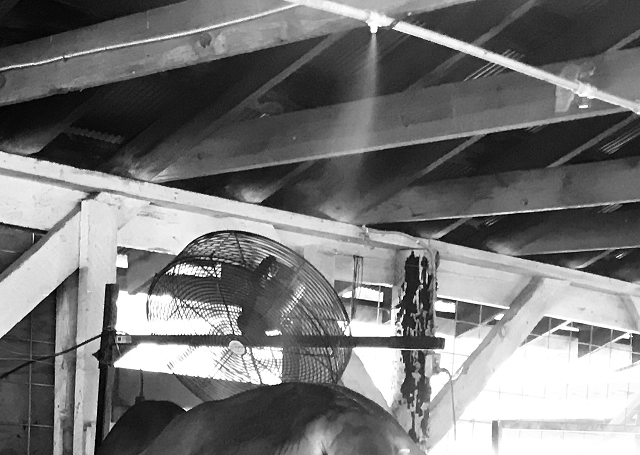
Mt Ida, AR weather in August 2019. 16th August Friday.

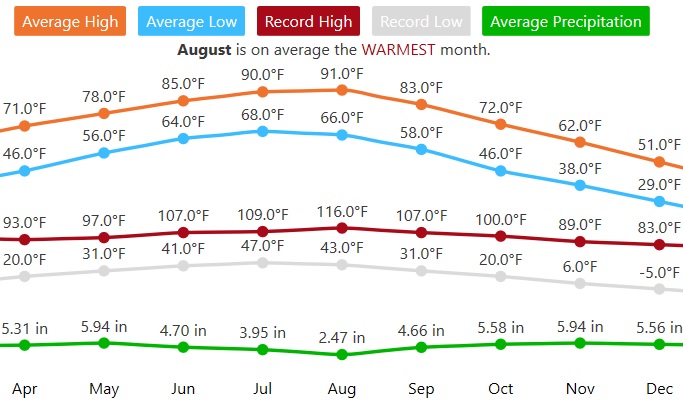
Is there an effective way to run a county fair?
Change to a one day fair or two-day event, Saturday being an all-day fair, and at a cooler time of year, and before the District and State Fair (mid October), with a grand parade on Saturday afternoon on the fairgrounds, and ends with a rodeo in the evening with mutton bustin’ for the little ones. Rodeo and carnival also on Friday evening. Livestock and exhibits can come in Friday afternoon before fair day or early morning on Saturday with judging 08:00 to 0930, a grand parade at 2 pm looping around the grounds, with a speech by the president to welcome people to the fair, led by the president and vice president and past president in a vintage car, followed by the grand champion livestock, followed by pets, rodeo horses, rodeo clown, vintage tractors and cars, and modern tractors and agricultural implements and floats. Time a couple of hens to hatch chickens and have a petting zoo or Pet Tent with hand sanitizer at the gates. Have events around the grounds and in the arena during the day e.g. Bingo, talent contest, chainsaw racing, cross cut sawing, live musical entertainment, cowboy / cowgirl challenge (all ages) a competition in the arena with obstacles designed to not only push horse and ride out of their traditional comfort zone but to test the communication and horsemanship of each rider, police dog in action, gumboot toss, etc. Have trade space booths selling everything from tractors, ATVs, UTVs, RTVs, hay equipment, contracting, fertilizer, fencing, etc. A committee member in charge of obtaining trade exhibitors with ribbons awarded to for best Heavy Trade Space and best promotional display. Trade space exhibitors to be on the grounds by 0930 Saturday and no trade space displays shall be removed from grounds until after 4 pm. The site is final. All exhibits collected Saturday evening or Sunday morning.
Past fairs.
In 2015 there was a tractor display at the fairgrounds throughout the fair and various activities throughout the week including pageants, art presentations by the Ouachita Artists Gallery, livestock shows, a rodeo, a Dutch oven cooking competition and live music. Can you imagine a float - Montgomery Co. Fox & Deer Hunters, followed by vintage cars, vintage tractors, modern day tractors and implements, police cars, fire trucks, horses, anything goes?
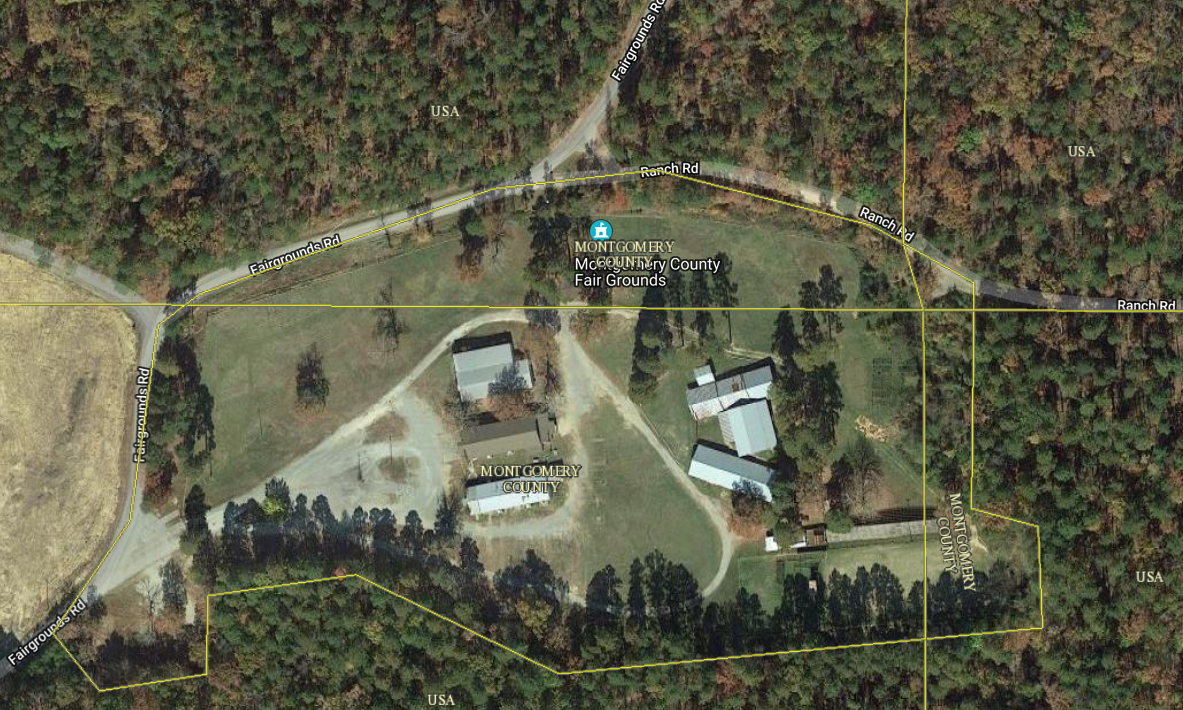
248 Fairgrounds Rd, Mt. Ida, AR 71957. Property Owner: Montgomery County.
Tax Exempt.
S-T-R: 30-2S-24W Rural Acreage PT NE NW (Fairground) 12.860 acres
and
3.0264 acres S-T-R: 19-02S-24W
and 2 acres 19-02S-24W SE SW S of road RD (Fairgrounds)
Creative Arts 2019
All articles must have been made in Montgomery County by the exhibitor and not previously entered for judging. All items entered must have been made or completed during the last 12 months. Each exhibitor should register at the front desk in the Red Building to obtain a number. (This number will be used for the registration for all items entered in the fair - including livestock.) All judges may disqualify any product or item that is not up to the standard quality. No blue (1st), red (2nd) or white (3rd) ribbons in 2019, the fair had 1st, 2nd and third place labels, with the judges' comments on the back. There were purple ribbons for Best of Show. A "Best of Show" award was given in each department. This was a ribbon only. Everyone got a sticker - 1st, 2nd, 3rd and each section had its own points system then the judge from all the firsts selects the best of show for that department. The judges are from out of the county i.e. a lady from the local EH clubs will go to the neighboring county to judge sewing, quilts, canning etc. and vice versa. The judges do not know who created the item, writes a comment on the back of the label and circles blue, red or white. The class steward later flips the label around and adds the sticker to the front of the label 1st for blue, 2nd for red and 3rd for white and name of exhibitor. Each label has a number that corresponds with an exhibitor's name. The yellow labels are junior items and the green labels adult items.
Livestock (some of the 2019 rules)
Animals shown in breeding classes must be 75% breed classification. All reg.
papers for pure breed animals will be checked by the livestock superintendents.
Exceptions will be made for the commercial heifer classes.
All calves must be halter broken and on normal feed and water prior to weigh in.
All calves will be given the opportunity to drink water before the weigh in.
All exhibits must be in place by 7pm Tuesday.
All cattle must remain in barns unless washing, grooming or feeding. No tying
outside.
Cattle can be tied out after 9 pm. All cattle must be back in the barn by 8am.
No professional groomers. No adhesives, no sprays, blow and go.
Any altering of the natural color of the animal by use of dyes, paints, hair
coloring, conditioners, colored show foam, graphite, colored powders or any
other substances is prohibited.
The addition of any hair or hair like substances, including tailheads and false
polls, is prohibited.
All livestock exhibits will be released Saturday beginning 9 pm. Early removal
will result in foliature of premium money.
Age 9 is defined as 9 years of age as of opening day of the current year's state
fair.
Any animals not having legible tattoo or fire brand number is ineligible and
will be barred from showing.
All animals 7 months of age must be dehorned (except Texas Longhorns, or horned
herfords (sic).
All departments will have a junior and an adult division and will be judged
separately except where noted in individual departments.
Each exhibitor must have his/her beef or diary animal trained to lead and stand
tied.
Photography - Every entry receives a ribbon.
One best of Show rewarded in entire department. Adult and
Youth sections. Amateur photos only, no professional photographs. All general
rules for creative arts apply. Montgomery County Residents only. Work must be
prepared for hanging. Work must not have previously been judged at this fair.
Must be mounted on stiff mat board with string/cord through holes in mat to hang
on hook. No frames, no glass. Enlargement 5x7 or 8x10; snapshot 3.5x5.5 or 4x6.
No more than three photos allowed in each lot per class.
1. Nature. 2. Action. 3. Scenic. 4. Floral. 5. Geometric or abstract. 6.
Portraits. 7. People (groups). 8. Animals. 9. Still-Life. 10. Structures. 11.
Miscellaneous.
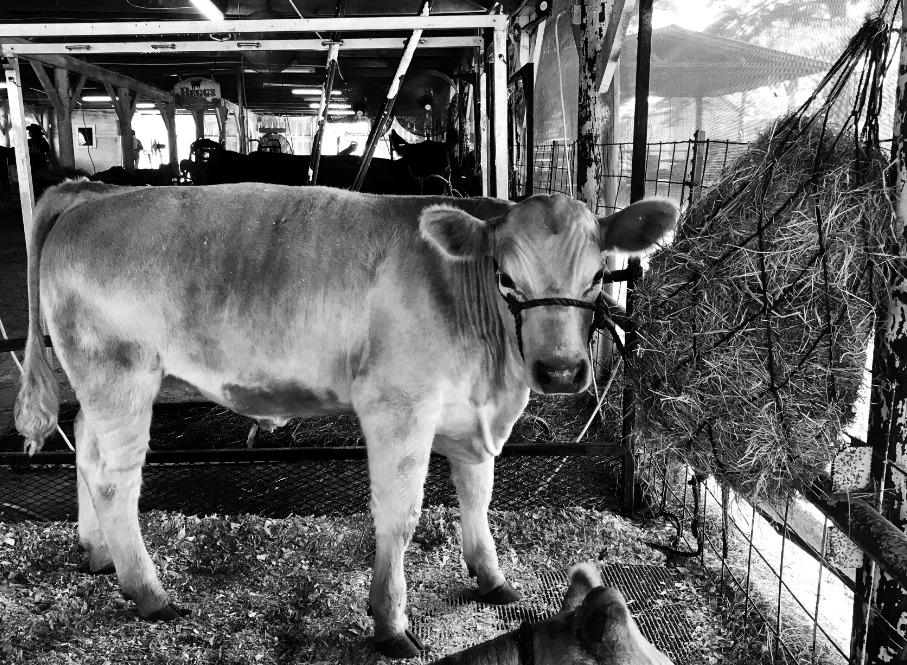
Photo taken at 4pm Friday 16th August, 2019, Montgomery County
Fair and there was nothing going on. I was the only one walking around.
Lake County Press 25
February 1909 Page 2
THE TRAVELLING PHOTOGRAPHER.
By Lalia Mitchell.
We found him at the county fair,
A grizzled man and tall,
With camera in a leaky tent,
And pictures on the wall.
You paid a quarter just for two;
They were not works of art,
But somehow each was worth the price
From which you had to part.
And he was busy all the day,
That travelling photo man.
He took old Mrs. Haflette and
The- doctor's pacer, "Dan;"
Dear Grandma Jenkins sat for him
And Deacon Horace Drew;
And all looked very much alike
I'll grant, when he was through.
He took the Simpson triplets next,
And charged them just for one;
And Hobson's "city boarder"
Had a postal card for fun.
Why, even Sam Gazelton sat
With his best girl, Miss Brown,
And that same picture's bound to be
The talk of half the town.
We found him at the county fair,
Just busy all the day,
And some of those same pictures
In time they'll throw away.
But some—Oh, they'll be cherished
And damped with many a tear,
For those who sat won't gather
At the fair with us next year.
And so God bless his camera,
And all it tries to do,
And keep from harm the "picture man"
Until his work is through.
His humble work that means so much,
That means so much for some,
When lips that awkward smiled for him
Lies passionless and dumb.
Antique Tractor Show
Open to tractors 1970 model or prior.
Hay Show
This department is open to any Montgomery County Farmer. One bale of
hay. All hay will receive either a first, second or third place rating.
Pee Wee Department
All participants must be eight years or younger. Animals do not have to be
registered.
Horticulture and Field Crops.
Flowers and vegetables must be grown by the exhibitors and must be disease free.
All horticulture exhibits must be entered from 8 am until 10 am on Wednesday.
Exhibitors must furnish containers. Attractive containers are desirable.
Pumpkins and watermelons must be brought to the fairgrounds by 10am Wednesday
and must stay on display during the entire fair. Pumpkins and watermelons that
are damaged due to rots, punctures etc. will not be eligible for weigh in.
Didn't find the horticulture items on display Friday afternoon.
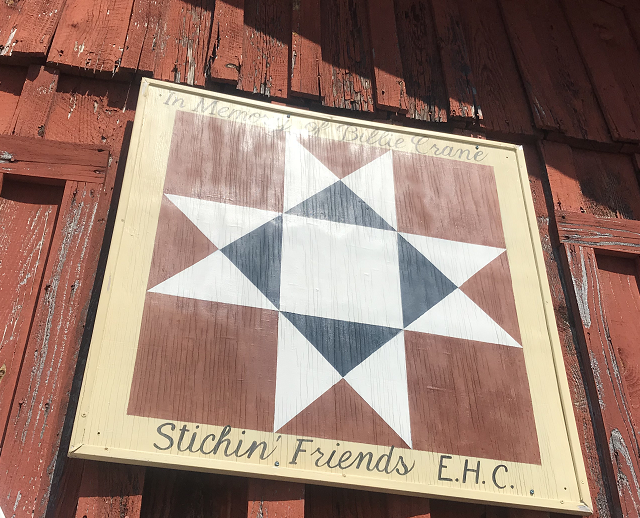
The Billie Crane Building aka the red building.
Billie was born on January 15, 1922 and passed away on Friday, July 23, 2010.
Billie was a resident of Mount Ida, Arkansas.
Educational booths in 2019 in the red building are for non-profit groups. Interesting, informative and well done.
There is Youth 4H, EHC and Adult Divisions. The booth must be set up Monday from 10am to 6 pm. No nails or staples may be used in the booth. Booths are judged on Wednesday. Booths must be taken down on Sunday between the hours of 1pm and 3 pm.
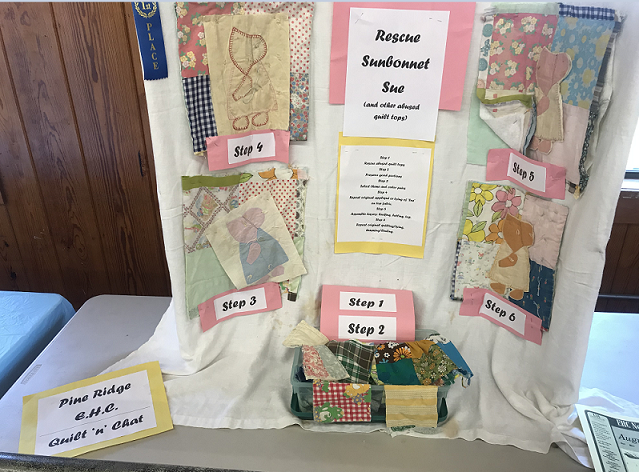
Rescue Sunbonnet Sue.
Rescue Sunbonnet Sue (and other abused quilt tops)
Step 1 Rescue abused quilt tops
Step 2 Preserve good portions
Step 3 Select theme and color pairs
Step 4 Repeat original appliqué or tying of "Sue" on top of fabric
Step 5 Assemble layers: backing, batting, top
Step 6 Repeat original quilting/tying, hemming/binding.
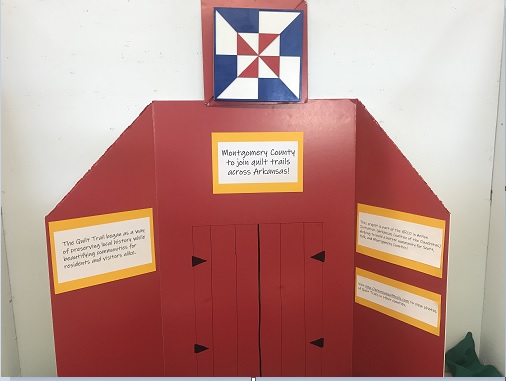
Montgomery County to join quilt trails across Arkansas. This project is part of
the ARCO in Action Initiative (Arkansas Coalition of the Ouachita). Helping to
build a better community for Scott, Polk and Montgomery Counties.
Visit to view Quilt Trails in
other counties. The Quilt Trail began as a way of preserving local history while
beautifying communities for residents and visitors alike. Sign up form needed 12
names, by Friday 16th half way there. Request consideration for a quilt block
for your barn or building or to be part of the committee. Contact Amy Monk at
the Extension Office at 870-867-2311 or email at amonk@uaex.edu
The first step will be to sign an owner agreement. This just states the obvious: it's the owners property, it must be on an accessible road where people can drive by to view it and maybe take photos. Need a picture of the block pattern that you have in mind with a brief story about the block, barn, location, family; preferably something of historical significance. These items are sent in to the Arkansas Quilt Trails committee for their approval by the Montgomery Country Quilt Trail co-ordinator. They accept just about anything as long as it is not an exact duplication of another quilt block elsewhere. The sizes are mostly 4’x4′, 6’x6′, or 8’x8′ although a few on homes are smaller.

Montgomery County Yarn Workers meet Friday's at the Montgomery Assisted Living
3.30 to 4.30 pm and they can teach you to crochet or knit.
All products must be in standard pint or glass jars made for home canning except
pickles, preserves, jams and jellies which maybe in standard pint, half pint or
12 ounce jars made for home caning, cream style corn may be entered in pint
jars. All exhibits must be labeled. Jars sealed with parafin
(sic) will not be
accepted. Exhibitors are limited to 5 entries per class.
Exhibits must must have been canned within the last 12 months.
 Junior and Adult Baked Goods
Junior and Adult Baked Goods
Entries must be on paper plates and in sealed plastic bags. Cakes on larger
paper plates. Articles will be awarded points or no points according to the
merit of the article. Limit 3 items per class.
Breads - coffee cake, cinnamon rolls (3), yeast rolls (3), yeast doughnuts 93),
other products.
Cakes - Angel Cake Uniced (sic), Butter Cake Iced,
Chiffon Cake, Sponge Cake, Pound Cake Uniced, Chocolate Cake, Decorative Cake
Whole, Fruit Cake, Cupcakes (3), any other.
Cookies - Brownies (3), Gingerbread (3), Cookies Rolled (3), Cookies Dropped
(3), Any other types.
Candy - Chocolate Fudge, Other cooked Candy.
First time I had ever seen peanut eyes candy.
Apiary
Extracted, Cut Comb Honey, Comb Honey.
Best of Show given for overall best Junior & Senior.
 Needlework - Limited to three pieces in each
category.
Needlework - Limited to three pieces in each
category.
Knit or Crochet -sweater, vest, stole, baby Layette (3 pc.), single baby item,
slippers, purse /tote, coat, doll clothes, tablecloth /bedspread / Afghan),
scarf, mittens, gloves, hats, felted items, Kitchen items, Other, Loom, Cap and
Scarf set, Stuffed Animal /toy.
Needlepoint - Picture or Wall, Pillow, Any other item.
Cross-stitch - Miniature -under 4 inches, over 4 inches, Pillow, Any other
item.
Embroidery - Table linens, Bed Linens, Picture / Wall hanging (limit 2), Any
other item, Machine Embroidery.
Tatting - Lace tatting, Collar, Any other item.
Sewing - exhibitors may enter unlimited number of items in each class. The best in show for adults in the sewing class was a beautifully made grey/black/white clutch purse. In the junior class it was a white fuzzy purse. I liked the feed sack apron, it came in second place in the junior section.
 Quilting
Quilting
All items considered as quilts must be quilted (hand, machine or tied) with a
layer of batting between two layers of fabric except in Class II. Limit 5 quilts per class. A best
of show ribbon will be chosen from all bed sized quilts, one from the wall
hanging, small quilts, quilt tops and miscellaneous in the youth and adult
divisions. All items must have been
finished within the last 12 months.
Class 1 Quilted Bed Quilts (Twin/Regular/Queen/King)
Method:
Lot 1 -Bed sized - Pierced
Lot 2 Bed Sized -Appliqued
Lot 3- Bed sized -Mixed applications (Pieced, Appliqued, Embroidered, Etc.)
Lot 4 - Bedsized- Preprinted Whole Cloth or Unpieced block.
Lot 5 -Bed sized -Embroidered Whole Cloth or Unpieced
Lot 6 -Bed sized -Counterpane (Quilting only. Whole cloth or unpieced
(sic) block.
Class II Wall Hangings, Small Quilts and Miscellaneous
Lot 11 - Youth/Toddler/ Baby Quilts Pieced
Lot 12 - Youth/Toddler/ Baby Quilts Mixed Applications.
Lot 13 -Quilted Clothing (Limit 2) Any type of quilting
Lot 14- Misc. (Table runners, Place Mats, Pillows, Etc.)
Lot 15 Quilt tops.
Art Show
 This is limited to Montgomery County Residents
This is limited to Montgomery County Residents
Clothesline Art (Any medium, elementary school only)
Work will be selected and submitted by the classroom teacher and will be hung in
the exhibit hall. Best of Show Ribbon will be awarded from among the First Place
Ribbons per grade.
Youth Art - Individual art entries may have been school projects but entered by
individuals. One entry in each lot. Pre-school and Kindergarten should be
entered in the "Kid's Corner."
Adult Art.
Power Wheel Derby - new in 2019
Two divisions. 3-6 years and 7-10 years. $5 entry fee. Power Wheel vehicles must
have original wheels and power wheel battery. Balloons will be attached to the
front and back of each power wheel car. The car with the last balloon will be
the winner. All children to wear helmets.
Roping up a good time at the fair.
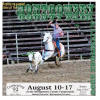
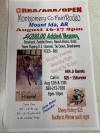
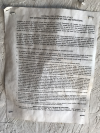

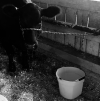
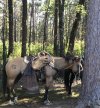















Photographs taken Friday afternoon 16th August 2019. The
rodeo arena was built in 1946.
Glossary
Doe – (aka. nanny) a female goat.
Junior doe - does under 24 months of age that have never been freshened.
Senior doe - any doe that has been freshened or is milked regularly.
Kid – a young goat.
Freshen - when a does gives birth (kid) and starts to produce milk.
Polled – having no horns. In cattle, horns are inherited as an autosomal
recessive gene, polledness being dominant.
Scurs – a scur is an incompletely developed horn growth. In the goat section
scurs under one inch are allowed.
Tailhead – the root of the tail where it joins the rump, in cattle.
Pullet – Female bird under one year of age.
Hen – Female bird over one year of age.
Cockerel – Male bird under one year of age.
Cock – or rooster Male bird over one year of age.
NPIP - National Poultry Improvement Plan Flock Certification form.
Jenny – a female donkey.
Jack – a male donkey.
Mule – is the offspring of a male donkey and a female horse.
Kit – a young rabbit.
Doe – a female rabbit.
Buck – a male rabbit.
Gilt - young female pig not yet mated.
Boar or hog, male pig of breeding age.
Market hog - lightweight, middleweight, heavy weight.
Arkansas cervids - any of a family (Cervidae, the deer family)
Arkansas ratites - a diverse group of flightless birds.
Scrapie - a fatal degenerative disease that affects the nervous systems of sheep
and goats. It is one of several transmissible spongiform encephalopathies.
Montgomery County ArkansasGenWeb Project
The farmer who exhibits the big carrot at the county fair has every reason to expect a prize. He knows his carrot can’t be beet.
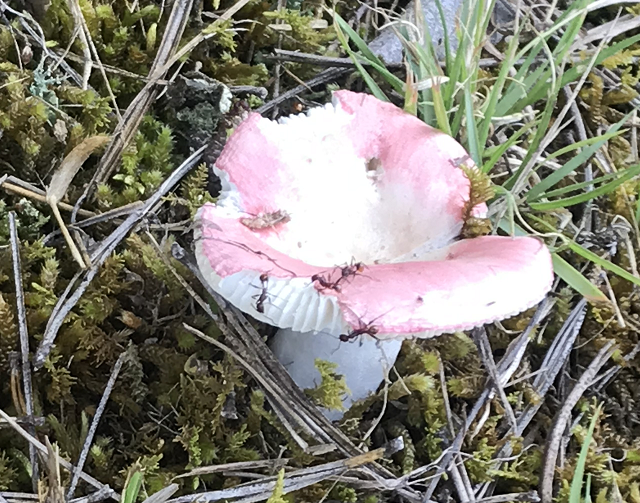
The cap is depressed. Near the grandstand a pink mushroom with ants feeding on
it, photo taken 16 Aug. 2019.
Polk County Fair and Garland County Fairs were canceled due to COVID-19. The
State Fair was also cancelled but the Montgomery County Fair went ahead in
August 2020.